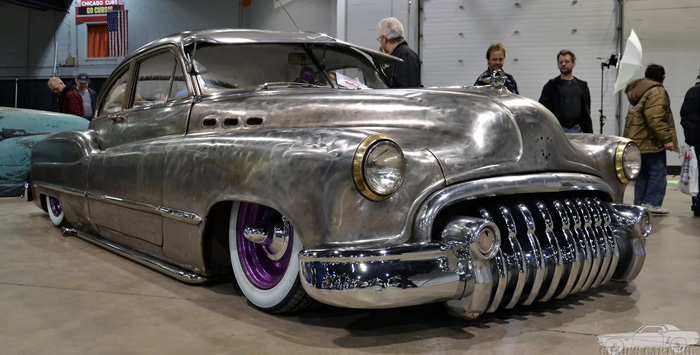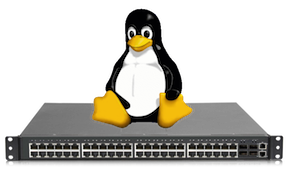Brite White Bare Metal
12/19/2017 Category: Open Switching

An earlier version of this blog appeared in Network World in July, 2015
The networking industry is making a decisive move toward open switches. Much of the media’s attention is on mega-scale operators’ do-it-yourself switches such as Facebook’s Wedge, 6-Pack, and Backpack, or Google’s more secretive in-house switches. Analyst Alan Weckel of Dell’Oro Group made the interesting observation that if Google were counted as a switch vendor (with itself as its only customer), it would be the world’s second largest – surpassed only by Cisco.
At least as important as what the tech giants are doing – and eventually, more important – is that normal-sized network operators are beginning to pay attention to open switching, and you’re going to see some enormous shakeups in the Ethernet market in the next few years.

Open switching has spawned a small lexicon that can be confusing to newcomers, leaving them wondering what the difference is, say, between bare metal switches and white box switches, and whether the differences really matter or are just a marketing overlay. In this blog I want to take a crack at differentiating the terms you hear most often around open Ethernet switching.
I don’t claim any of this as authoritative. It’s just my attempt to wave away some of the fog.
Open Switches
Let’s start with defining open switches themselves, although I doubt that anyone who is interested enough to read this article doesn’t already have a reasonable understanding of what open switching is.Open switches are switches in which the hardware and software are separate entities that can be changed independently of each other. So the same hardware can support multiple operating systems, or the same operating system can be run on multiple hardware configurations. This is in contrast to closed switches, in which the hardware and software are always purchased together. So for example if you buy a Juniper EX or MX you also buy JUNOS. If you buy a Cisco Catalyst switch you buy IOS; you get NS-OS with a Ciscso Nexus.
So open switches are about choice. Interestingly, though, that doesn’t necessarily mean your choice. It could mean a vendor has the choice of rebranding an open switch, adding their own software, and selling it all as a package.
That’s where the lexicon comes in.
Bare Metal Switches
These are open switches as you usually think of them. You buy the hardware, no brains included, all ready to be loaded with the operating system of your choice. This is how we’ve been building servers – and sometimes PCs and laptops – for years. You choose the applications you need to run; then you choose the operating system that best supports the applications or best fits your operational environment; and then you choose the hardware on which to run it all.
Bare metal manufacturers are primarily Taiwanese, and include such companies as Accton, Quanta QCT, Alpha Networks, and Delta Computer. These same companies are Original Design Manufacturers (ODMs) for many of the mainstream switch vendors; in fact some of the bare metal switches available to you are the same switches you buy from the mainstream vendors, but without the label and without the operating system, and at a fraction of the cost.
The bare metal switch comes with a boot loader called the Open Network Install Environment (ONIE), which allows you to load an operating system onto the switch. A sort of PXE for switches.

There’s a multitude of operating systems you can load, such as Broadcom’s FastPath, Big Switch Networks’ Switch Light, Cumulus Networks’ Cumulus Linux, and Pica8’s PicOS. Juniper Networks made a move into the open switch community with its OCX1100, and it will be interesting to see if eventually you can buy a license for JUNOS to run on your choice of bare metal switch.
What the available operating systems have in common is that they are commercial software. You won’t find much in the way of practical freeware. There’s the Open Compute Project’s Open Network Linux (ONL), but right now ONL is an open-source development platform on which to build practical operating systems, rather than a fully cooked OS. It’s a great foundation if you are a commercial developer or if you want to tinker with coding your own OS in a lab, but it’s not something you can deploy in your production network by itself.
White Box Switches
This is where things start to get confusing. “White box” is often used interchangeably with “bare metal” or “brite box,” so context is important. I’m giving you a definition here that sits somewhere between bare metal and brite box, and you’re more than welcome to disagree. It’s the closest I can get without blurring the lines.
A white box switch differs from bare metal switch in that it comes with an operating system installed. It’s still an open switch, because the OS and the hardware are not integrated as they are in a “black box” switch. Basically you’re buying a package: a bare metal switch and an operating system.
If you buy a switch from Accton’s subsidiary Edge-Core Networks, for example, you might get a choice of bare metal, white box with DCSS SwitchOS installed, or white box with Cumulus Linux installed. Juniper’s OCX1100 is a white box solution, because it is a commodity switch packaged with JUNOS. Pica8 offers a white box solution in which you can get their PicOS packaged with a switch. Big Switch Networks is also a white box provider; you buy their SDN software and bare metal switches as a package. Alternatively, you can get a Big Switch package with switches from a brand-name provider such as Dell, which makes them a brite box provider.
Wait… A what?
Brite Box Switches
Brite box stands for BRanded whITE box. Just in case you weren’t confused enough. You’ll see it spelled brite box, brite-box, or britebox. Greg Ferro suggests calling them whitebrand boxes, saying britebox “…sounds like dishwashing liquid or something you buy from the local two dollar store.”
Whatever form tickles your fancy, there actually is a difference from white box and bare metal. Sort of.
A brite box switch is made by an ODM, and is often the same switch offered by the ODMs as bare metal, but it sports a front bezel with a brand name like Dell or HP. And so there you have it. Branded white box.
Merchant Silicon
A cornerstone of open switches, whether bare metal, white box, or brite box, is that they are built around merchant or “off the shelf” silicon from companies such as Broadcom, Mellanox Technologies, Intel/Fulcrum, and Centec Networks. This is in contrast to the custom ASICs used by most of the legacy vendors in their high-end switches and routers. While custom silicon allows for tight integration with a proprietary operating system and a broad feature set, the production cycle from design to foundry is long and enormously expensive. Merchant silicon vendors, on the other hand, introduce new generations of chips every 18 to 24 months.
This doesn’t mean that merchant silicon is to be found only in open switches. While the big vendors like Cisco and Juniper still tout the better points of custom ASICs, they too are introducing switches built on merchant silicon, such as Cisco’s Nexus 3000 and 9000, and Juniper’s aforementioned OCX1000. Arista switches have always used off-the-shelf chips.
The object lesson for vendors that tie their software too closely to their hardware is Sun Microsystems. While Sun clung to custom microprocessors, vendors like Dell and HP with open x86-based servers swooped in and took over the server market. Between November 2007 and November 2008, Sun lost 80% of its value. Open switches can do the same thing to established switch vendors if they cling too closely to past practices.
Does It Matter?
Bare metal switches only matter to commercial software providers. Unless you’re Facebook or Google, you’re not likely to put something in your network with minimal support channels. White or brite box solutions, in which you’re buying a hardware and software package backed up by trustworthy engineering support, are the only real open switching choices for normal sized network operators.
That said, what really matters is the movement to open switching. Think about how you build servers right now, and consider the advantages of building your switches the same way.